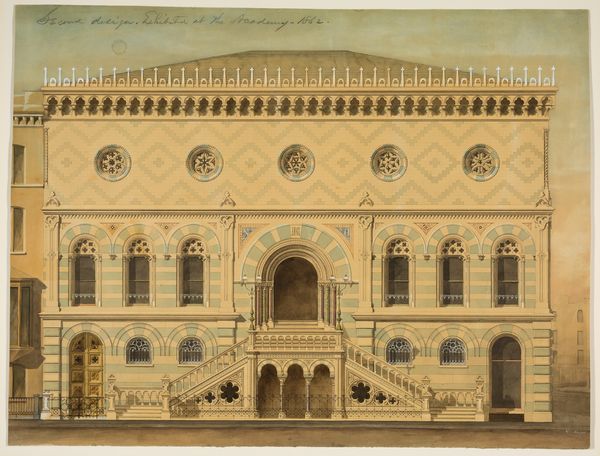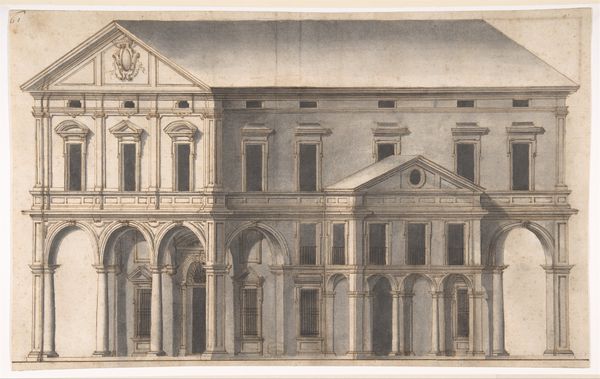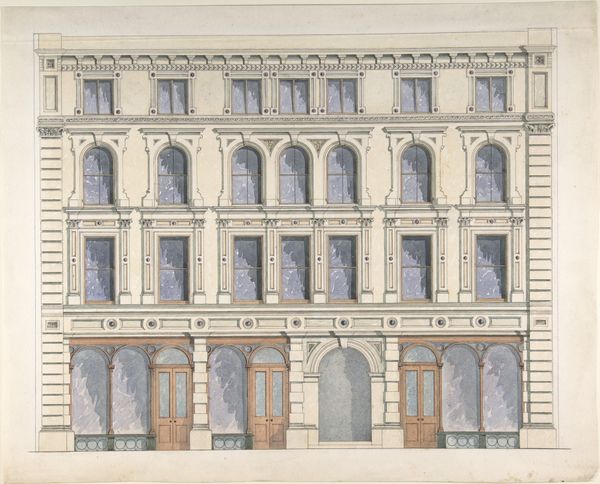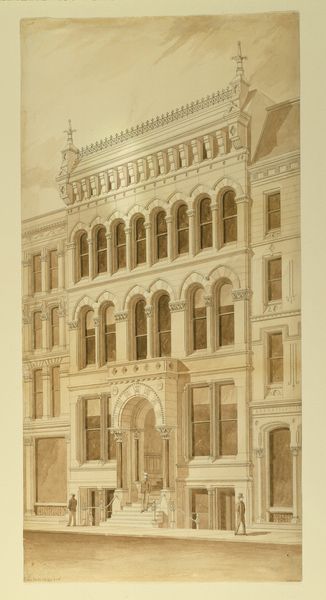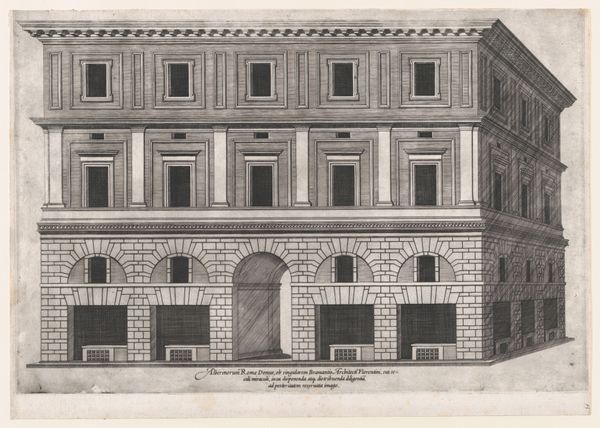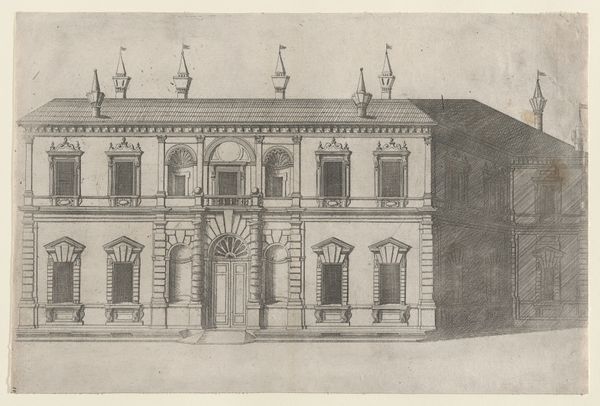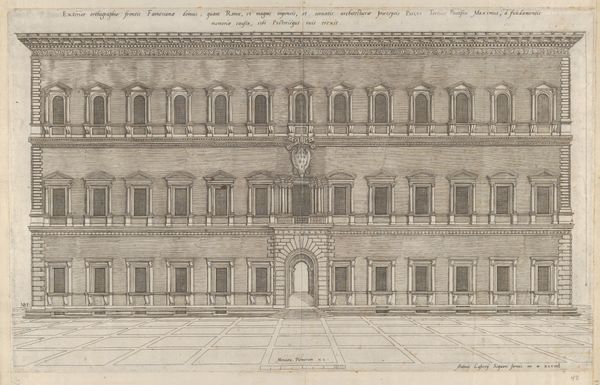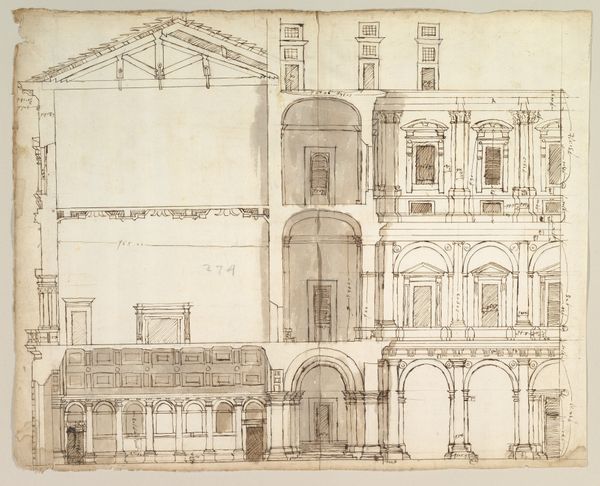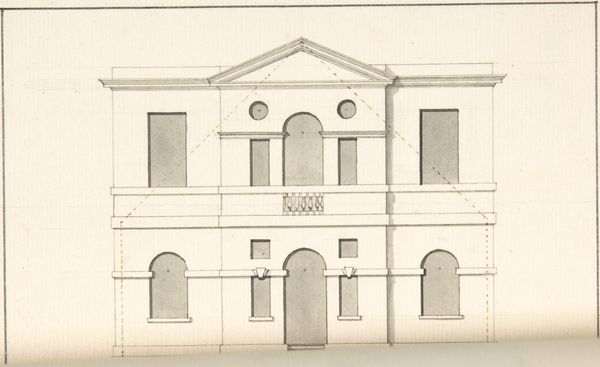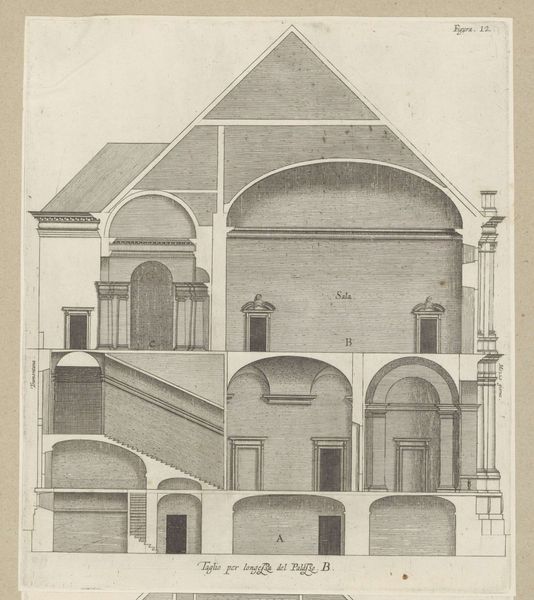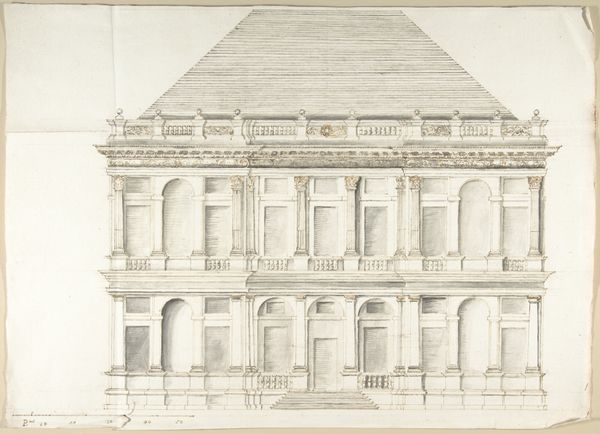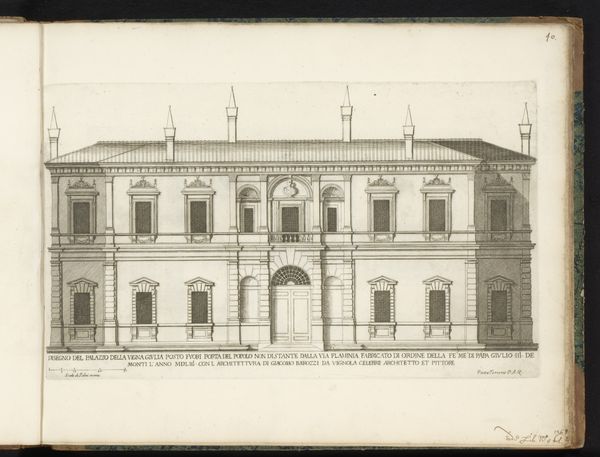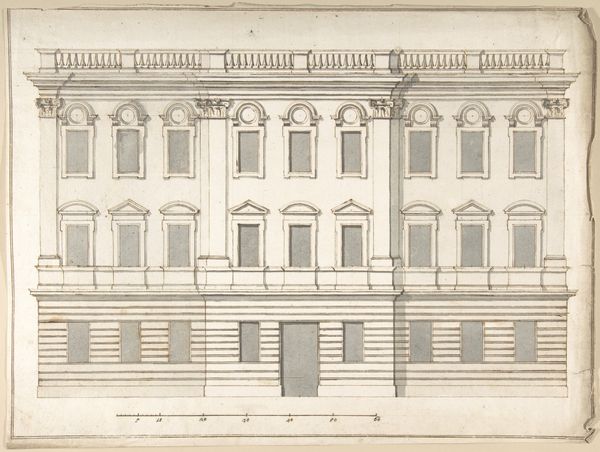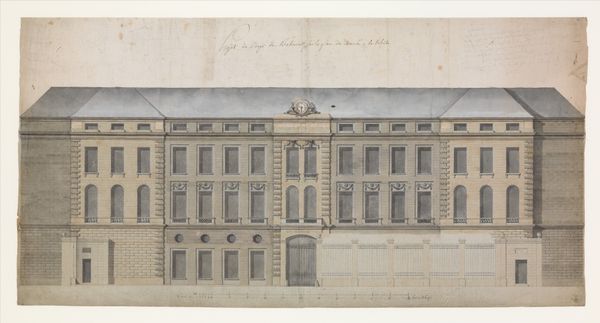
National Academy of Design Competition, New York, New York, South Elevation 1861
0:00
0:00
drawing, print, paper, architecture
#
drawing
#
neoclassicism
# print
#
paper
#
historic architecture
#
cityscape
#
history-painting
#
academic-art
#
watercolor
#
architecture
Dimensions: 53 × 68.6 cm (20 7/8 × 27 in.)
Copyright: Public Domain
Curator: Here we have Peter Bonnett Wight’s “National Academy of Design Competition, New York, New York, South Elevation,” dating from 1861. It’s rendered in watercolor, drawing, and print on paper. What strikes you first? Editor: It feels rather severe, doesn’t it? The symmetrical composition and muted colors project an almost solemn mood. And those patterns, precise as they are, create a rather rigid façade. Curator: This proposal reflects the architectural fervor surrounding institutional identity during the mid-19th century. Consider that Wight, although unsuccessful in this competition, designed the Venetian Gothic National Academy building a few years later, completed in 1865. These designs sought to visualize cultural power. Editor: Indeed, one sees echoes of neoclassical ideals – balance, order, harmony – reinterpreted through surface ornamentation. Look closely at the façade. The alternating brickwork creates this vibrant textured field; those trefoil motifs disrupt any monotony, though I still read a strict, controlling order across the composition as a whole. Curator: It's critical to see Wight engaging with a broader debate: what architectural language best suited a democratic nation aspiring toward cultural prominence amid deepening social fissures, including the Civil War looming? It's important to examine the socio-political subtext, beyond mere aesthetics, regarding how buildings functioned as symbols. Editor: I see your point. The ornamental scheme strives toward visual complexity while the underlying structure follows familiar European precedents. It mirrors, in some way, America's grappling to formulate its own cultural vocabulary. Its design, therefore, becomes almost a visual rhetoric – at once self-assertive and dependent. Curator: Absolutely. It is a powerful artifact embedded within multiple historical strata, reminding us that buildings, even unbuilt proposals, communicate ideologies. Editor: I appreciate that context. The artwork initially struck me as formal and distant, but understanding its position relative to mid-19th century dialogues adds crucial resonance.
Comments
No comments
Be the first to comment and join the conversation on the ultimate creative platform.
